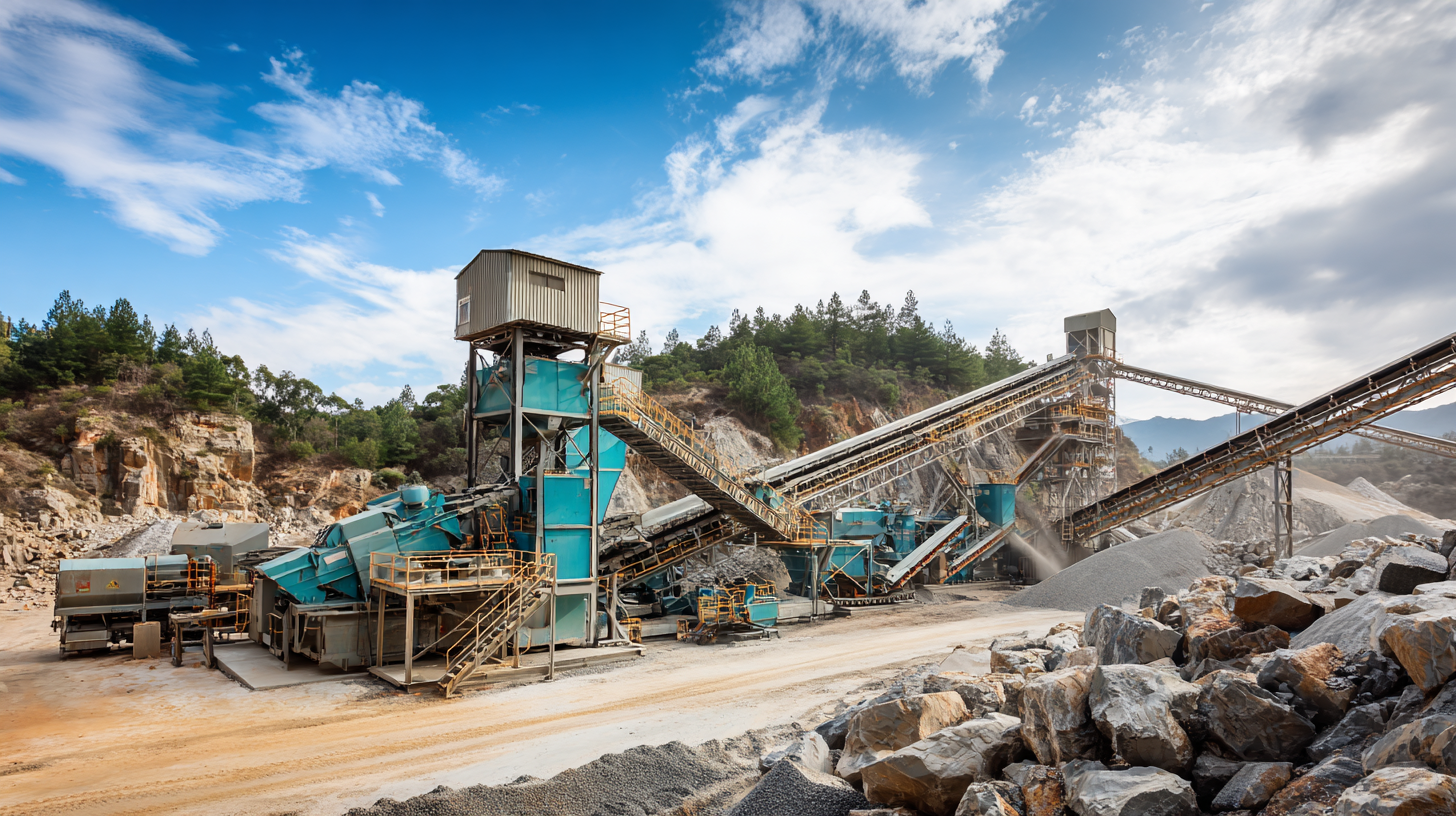In the contemporary construction and mining industries, the efficiency of a Stone Crusher Factory plays a pivotal role in determining overall productivity and profitability. According to a report by Research and Markets, the global stone crushing equipment market size is projected to reach USD 4.5 billion by 2025, with a compound annual growth rate (CAGR) of 8.2% from 2020 to 2025. This emphasizes the urgent need for operational optimization within stone crushing facilities. Enhancing production efficiency not only reduces operational costs but also improves material output, meeting the increasing demand for high-quality aggregates. By implementing strategic improvements, such as utilizing advanced technologies and optimizing workflow processes, a Stone Crusher Factory can significantly boost its performance, positioning itself favorably amidst a competitive market landscape.

Identifying Key Performance Indicators (KPIs) for stone crusher operations is essential for optimizing production efficiency. KPIs help manufacturers measure the effectiveness of their equipment, processes, and workforce. Some critical KPIs to monitor include the production rate, which indicates the volume of crushed stone produced over a specific time frame. This metric allows managers to identify bottlenecks and areas for improvement in the production line.
Another vital KPI is the downtime percentage, which tracks the amount of time equipment is out of operation due to maintenance, repairs, or other issues. By analyzing downtime, factory managers can implement preventative maintenance schedules and reduce unplanned outages, ultimately enhancing productivity. Additionally, measuring the energy consumption of operations provides insights into operational costs, enabling better resource allocation and sustainability efforts. By consistently monitoring these KPIs, stone crusher factories can refine their processes and achieve greater production efficiency.
Implementing preventive maintenance within stone crusher factories is crucial for minimizing downtime and enhancing production efficiency. By utilizing advanced technologies such as the Internet of Things (IoT) and AI-driven predictive analytics, operators can proactively monitor equipment health and predict failures before they occur. Data from industry reports indicate that organizations leveraging predictive maintenance strategies can reduce equipment downtime by up to 50%, which significantly contributes to production optimization.
Moreover, adopting a cloud-based deployment for maintenance solutions allows for real-time data access and analysis, streamlining the workflow and enabling better decision-making. For small to medium enterprises, this approach can level the playing field against larger competitors by improving responsiveness and reducing operational costs.
 The integration of digital twins technology also facilitates more comprehensive simulations of machinery performance, thus aiding in the planning and execution of maintenance tasks. As industries move towards smarter and more sustainable practices, embracing these innovative strategies will be essential for maintaining operational efficiency and achieving long-term profitability.
The integration of digital twins technology also facilitates more comprehensive simulations of machinery performance, thus aiding in the planning and execution of maintenance tasks. As industries move towards smarter and more sustainable practices, embracing these innovative strategies will be essential for maintaining operational efficiency and achieving long-term profitability.
Enhancing the production efficiency of a stone crusher factory can be significantly achieved through the strategic use of technology. According to the Global Industry Analysts report, the stone crushing equipment market is projected to reach $4.2 billion by 2026, driven by innovations that focus on automation and precision. Implementing advanced technologies such as IoT-enabled sensors and automated control systems allows operators to monitor equipment performance in real-time, leading to reduced downtime and optimized maintenance schedules.
Furthermore, integrating artificial intelligence and machine learning into crushing operations can enhance material processing efficiency. A study from Research and Markets indicated that AI applications in the mining and metallurgy sectors could improve productivity by over 20%. By analyzing crushing patterns and predicting machine failures, these technologies enable factories to make data-driven decisions, ultimately leading to a more streamlined operation. Embracing such innovations not only maximizes output but also minimizes operational costs, reinforcing the competitive edge of stone crusher manufacturers in an increasingly tech-driven marketplace.
This chart represents the production efficiency percentage of a stone crusher factory over a period of six months. It shows a significant increase in efficiency, suggesting effective technology optimizations and operational improvements throughout the year.
Employee training and skill development are crucial components in maximizing the production efficiency of a stone crusher factory. A well-trained workforce can significantly enhance operational performance, leading to improved output quality and reduced downtime. Regular training sessions focusing on safety protocols, equipment handling, and maintenance practices empower employees to operate machinery confidently and more effectively. By ensuring team members are proficient in their roles, factories can minimize errors and optimize workflows.

Furthermore, introducing specialized skill development programs can help employees understand the nuances of different stone-crushing techniques and equipment capabilities. This knowledge enables them to make informed decisions during production processes, improving both efficiency and resource management. Continuous learning opportunities, such as workshops and hands-on training with new technologies, not only keep employees up-to-date with industry advancements but also foster a culture of innovation and responsibility within the workplace. Investing in your team’s skills ultimately leads to higher productivity and a smoother operational flow, positioning the factory for long-term success.
Streamlining supply chain management is crucial for enhancing the production flow in a stone crusher factory. According to a report by McKinsey, companies that excel in supply chain management can increase their operational efficiency by up to 15%. By optimizing supplier relationships, manufacturers can ensure that raw materials arrive on time and are of the necessary quality, which is vital in reducing downtime and maintaining a continuous production cycle. For instance, establishing long-term contracts with reliable suppliers can help mitigate risks associated with price volatility and supply disruptions.
Additionally, integrating advanced technology into the supply chain can significantly improve transparency and responsiveness. A study by Deloitte indicates that organizations leveraging real-time data analytics report a 25% improvement in supply chain decision-making speed. By implementing inventory management systems that utilize data analytics, stone crusher factories can better predict demand trends and adjust their production schedules accordingly. This proactive approach minimizes excess inventory and enhances cash flow, allowing for a more consistent production pace and better service to customers. As such, a well-optimized supply chain not only boosts efficiency but also contributes to a more resilient and competitive business model in the aggregate industry.
| Dimension | Current Performance | Target Performance | Improvement Strategy |
|---|---|---|---|
| Production Rate (tons/hour) | 50 | 70 | Implement automated equipment |
| Downtime (hours/week) | 10 | 4 | Regular maintenance schedule |
| Supply Chain Lead Time (days) | 15 | 7 | Optimize supplier relationships |
| Quality Control Defects (%) | 5 | 1 | Enhance training for staff |
| Employee Productivity (tons/employee) | 8 | 12 | Provide incentive programs |
